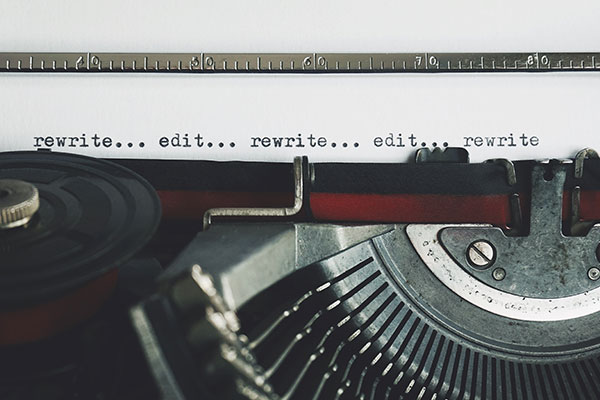WHEN TO START REVISING
Of course, you’ve got to have something to revise. It’s always better to get that first draft finished through to the end before you go back to chapter one and start fiddling with it. One important reason is that the type of head space you need to enter for the revision phase is quite different from the initial writing phase. Sue Woolfe, in The Mystery of the Cleaning Lady: a writer looks at creativity and neuroscience (UWAP 2007), uses the term ‘loose construing’ to refer to that difficult-to-put-in-words wild and wayward creative space that spawns stories (and other art forms).
You can tweak and change your mind and alter and adjust and throw things out along the way – that is part of the process of wrestling your story down on to the page – but endlessly tinkering to get it right in the first draft is not going to help you finish it. Your first draft may be rough, incoherent and full of inconsistencies, but that’s okay. It doesn’t need to be polished. You simply need something to work with.
PULLING BACK
To begin the revision phase you need to pull back from your work in order to see it ‘whole against a wide sky’ (to borrow from Rilke). You need fresh eyes to look at your work anew, but more importantly you need to change your relationship to your text, to switch modes and engage a more analytic, rational part of your brain.
Don’t get me wrong – revising your work is no less creative than the initial burst of untidy dreaming, it just requires a different type of approach, a different perspective. The passage of time helps to achieve this shift in perspective. Put your manuscript aside for a while (a couple of weeks, a couple of months) until you feel ready to don the reviser’s hat. Read lots of books and attend to all those things in your life that may have been neglected while you were glued to the computer.
DIVING DEEP
Once you have stepped back from your work you then need to dive deep into the core of it to identify the heart of the narrative. Where does the real story lie? What is the essence of your tale? What are you really trying to say? Many authors I work with are only able to fully identify what they are writing about in the second, third and subsequent drafts. This does not in any way mean that their earlier drafts are unworthy, it simply illustrates the complexities of the writing process and the mysteries of inspiration and creativity. Many published writers experience the same sense of discovery through the revision process.
I remember Karen Foxlee at the Byron Bay Writers Festival saying that her first draft was like a compost heap. There were muted chuckles as the image of a rank collection of waste materials rippled through the audience. And out of that compost heap, Karen went on to explain, a seedling emerged, and she could see where the story lay clearly for the first time. In the revision phase, Karen nurtured, trained and grew that seedling into an award-winning novel.
SHAPING THE TEXT
When you have established what it’s all about and feel confident that you understand the essence of what you want to offer your readership, you can begin the process of enhancing your underlying themes and shaping the text to honour the story. This involves honing your voice, trimming and tightening your text, pacing your narrative and structuring your story line. This may take many drafts. It may be messy and frustrating, but it is ultimately rewarding if the end goal is kept in mind – getting the words right.
There is no denying that the art of revision is fundamental to the craft of writing. It is a journey of discovery, not only about the work, but about the self. And after all, isn’t that why we write, and isn’t that why we read?
